f there’s one city in Pakistan that embodies history, culture, food, and energy in equal measure, it’s Lahore. As the capital of Punjab and the second-largest city in Pakistan, Lahore is more than just a metropolis—it’s a living, breathing museum of centuries past, wrapped in the warmth of its people and the vibrancy of its traditions.
Known as the cultural capital of Pakistan, Lahore welcomes travelers with open arms, offering a rich blend of Mughal architecture, Sufi shrines, colonial landmarks, buzzing bazaars, and mouthwatering street food. Whether you’re a history buff, a foodie, a photographer, or just an adventurer seeking authenticity, Lahore has something for you.
In this guide, I’ll walk you through 20 handpicked destinations, provide real-world travel advice, share budgeting insights, suggest where to stay, and help you explore the real Lahore—beyond the brochures and blog clichés.
Top 20 Must-Visit Places in Lahore
1. Badshahi Mosque
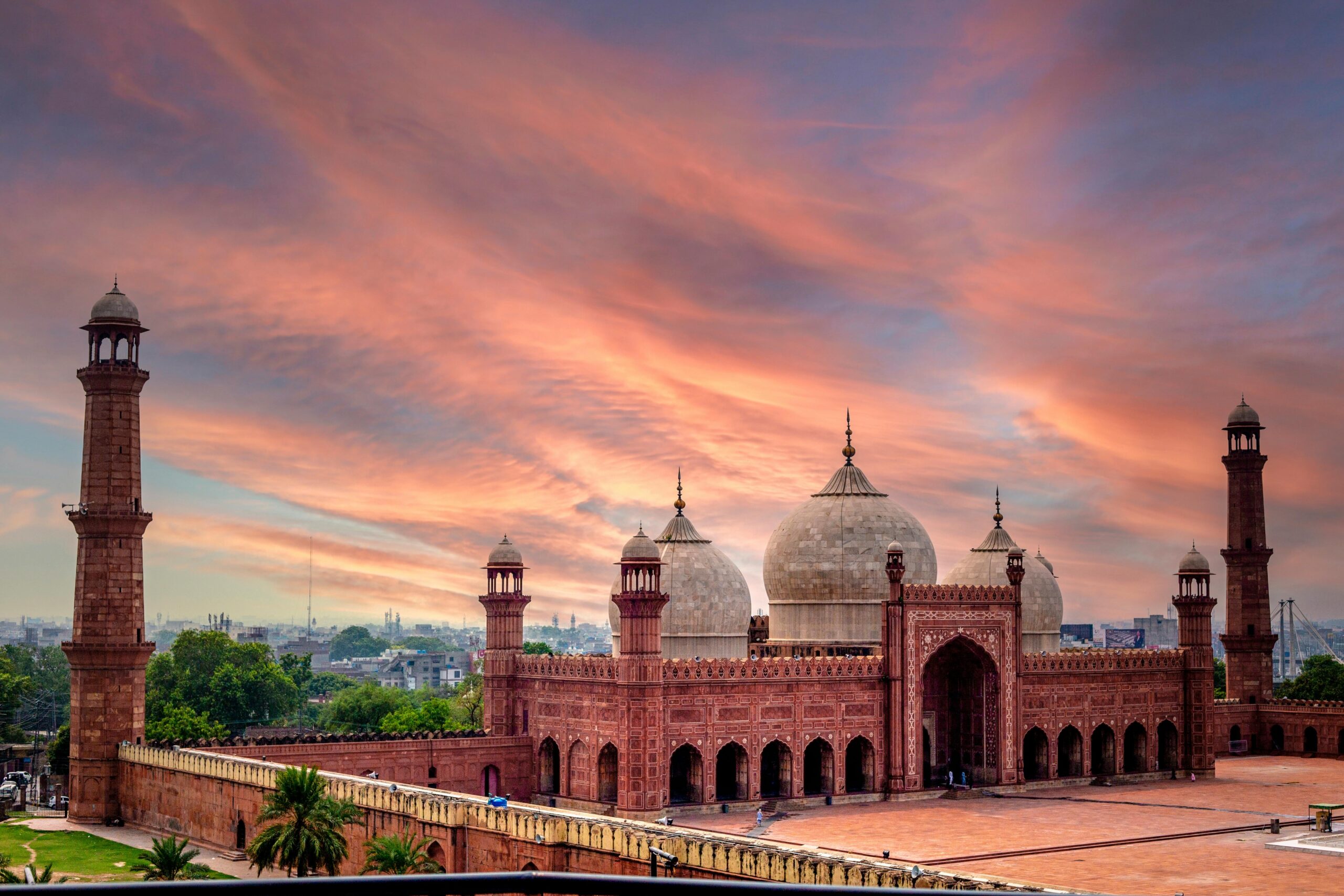
Nestled next to the Lahore Fort, the Badshahi Mosque is the ultimate architectural crown of Lahore. Built in 1673 by the Mughal Emperor Aurangzeb, it’s one of the largest mosques in the world, and it still leaves visitors awestruck with its red sandstone facade and towering minarets.
As soon as I stepped into the expansive marble courtyard, I could feel the history echoing through the walls. The mosque can accommodate over 100,000 worshippers during special congregations. I recommend visiting during golden hour for the best photographs—sunlight bounces off the domes creating a warm, ethereal glow.
Practical Tips:
-
Entry is free.
-
Modest clothing is required (scarves for women).
-
Located near the Lahore Fort on Circular Road.
-
Best time to visit: Early morning or sunset.
Insider Tip: Don’t miss the small museum inside the mosque that houses relics attributed to the Prophet Muhammad (PBUH).
2. Lahore Fort (Shahi Qila)
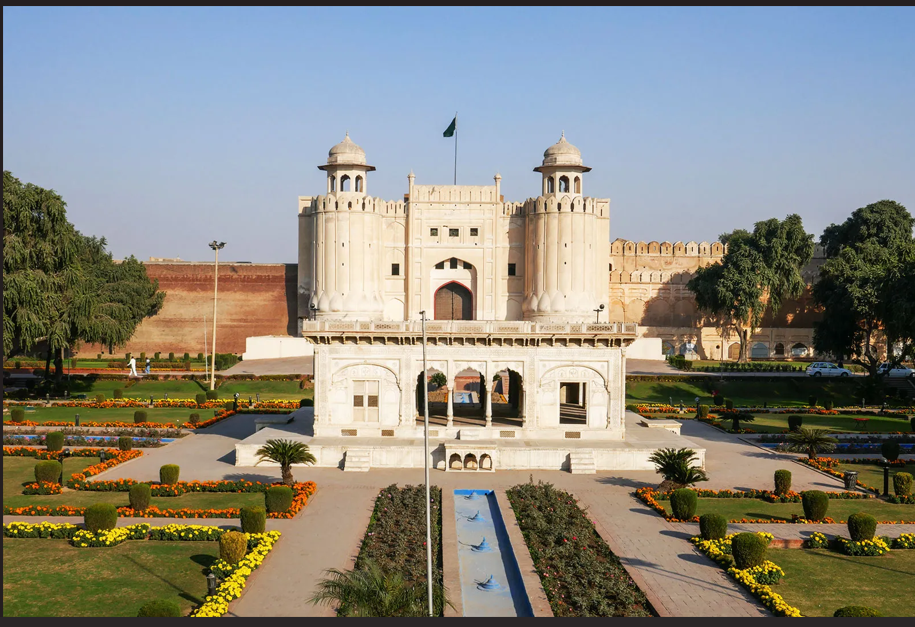
A UNESCO World Heritage Site, Lahore Fort is the beating historical heart of the city. Originally dating back to the 11th century and renovated by successive Mughal emperors, the fort is an expansive complex featuring palaces, halls, gardens, and secret tunnels.
Walking through the fort feels like entering a royal diary—Sheesh Mahal (Palace of Mirrors) dazzles with reflective beauty, while Naulakha Pavilion’s ivory-inlaid design speaks of regal elegance.
Location: Adjacent to Badshahi Mosque.
Entry Fee: PKR 50 for locals, PKR 500 for foreigners.
Opening Hours: 9 AM – 5 PM, closed on Fridays.
Local Tip: Hire a registered guide inside the fort for PKR 300–500. You’ll uncover legends and anecdotes not found in guidebooks.
3. Shalimar Gardens
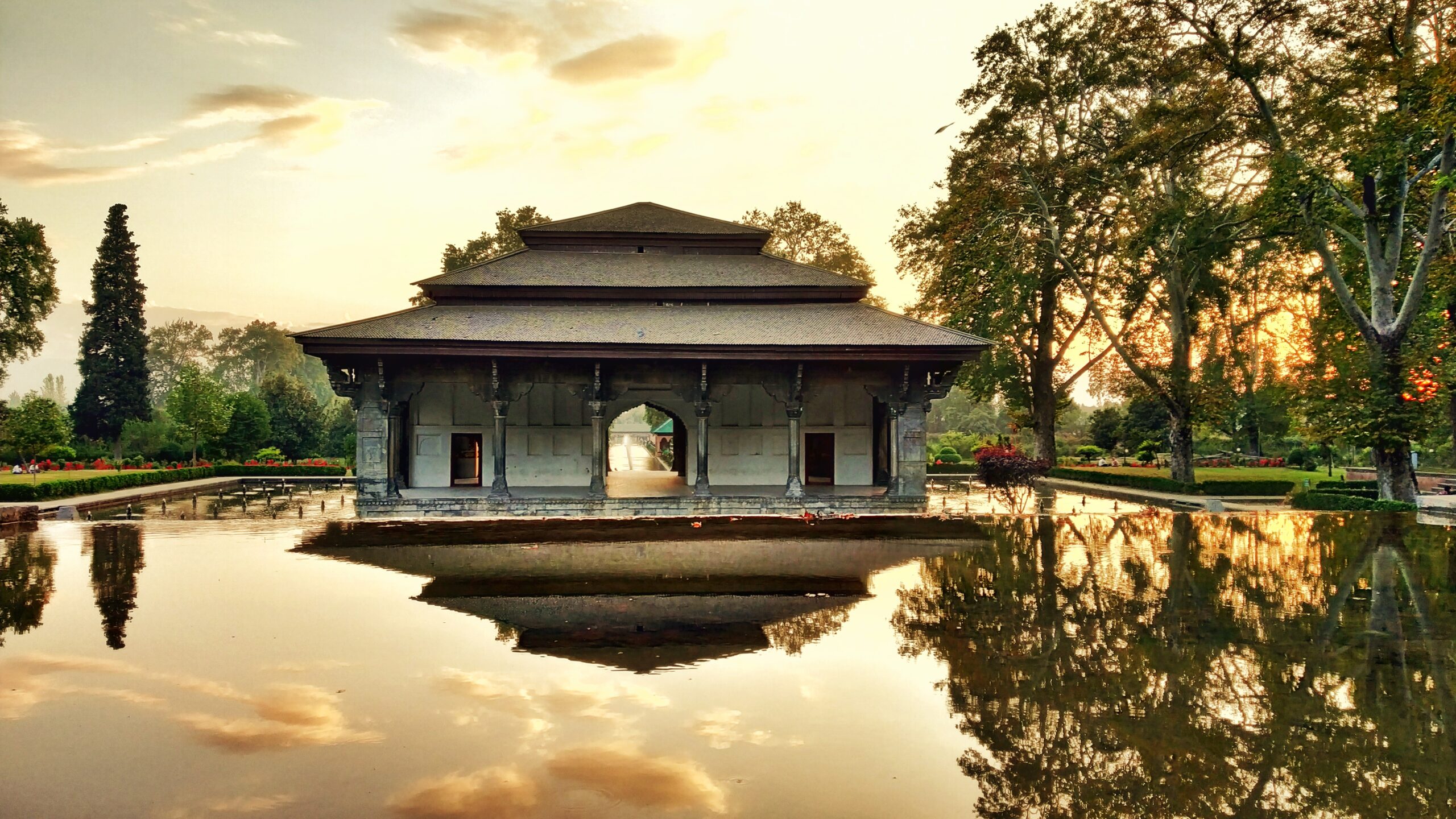
Designed during the reign of Emperor Shah Jahan in 1641, Shalimar Gardens is a breathtaking example of Mughal landscaping—terraced gardens, flowing fountains, and intricate tile work combine to create an oasis of calm amid the urban buzz of Lahore.
I visited on a weekday afternoon, and the quiet serenity made it the perfect place for a reflective walk. The garden is divided into three descending terraces symbolizing different levels of heaven. You’ll find fruit trees, flower beds, and stone pavilions designed for royal leisure.
Location: GT Road, approximately 5 km from the city center.
Entry Fee: PKR 20
Best Time to Visit: Spring, when flowers are in full bloom and the fountains are active.
Photography Tip: Climb the upper terrace for panoramic shots of the cascading pools and symmetrical gardens.
4. Lahore Museum
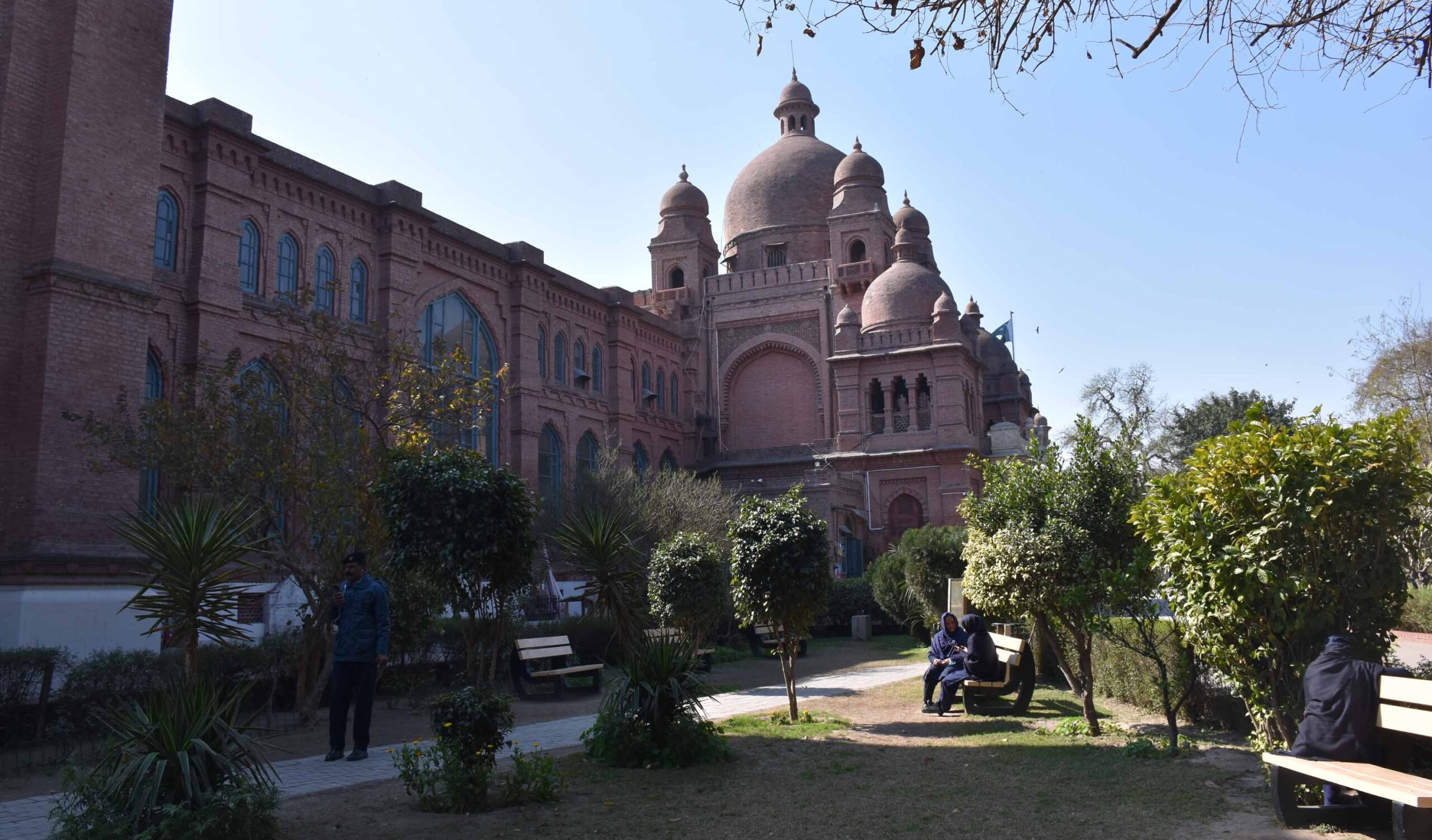
If you’re curious about the city’s evolution from ancient civilizations to colonial rule, the Lahore Museum is a treasure trove. Built during the British Raj in 1894, it houses Gandhara sculptures, Mughal miniatures, Sikh artifacts, and manuscripts that bring history to life.
One of the most famous exhibits is the Fasting Buddha, a hauntingly powerful sculpture from the Gandhara period. I also enjoyed the diverse coin collection—each piece telling a story of power, trade, and conquest.
Location: Mall Road, near the Punjab University Old Campus.
Entry Fee: PKR 50 for locals, PKR 500 for foreigners.
Hours: 9 AM – 4 PM, closed on Fridays.
Travel Tip: Allocate at least 2 hours here. Pair your visit with a stroll down the historic Mall Road for colonial-era architecture and bookshops.
5. Walled City of Lahore
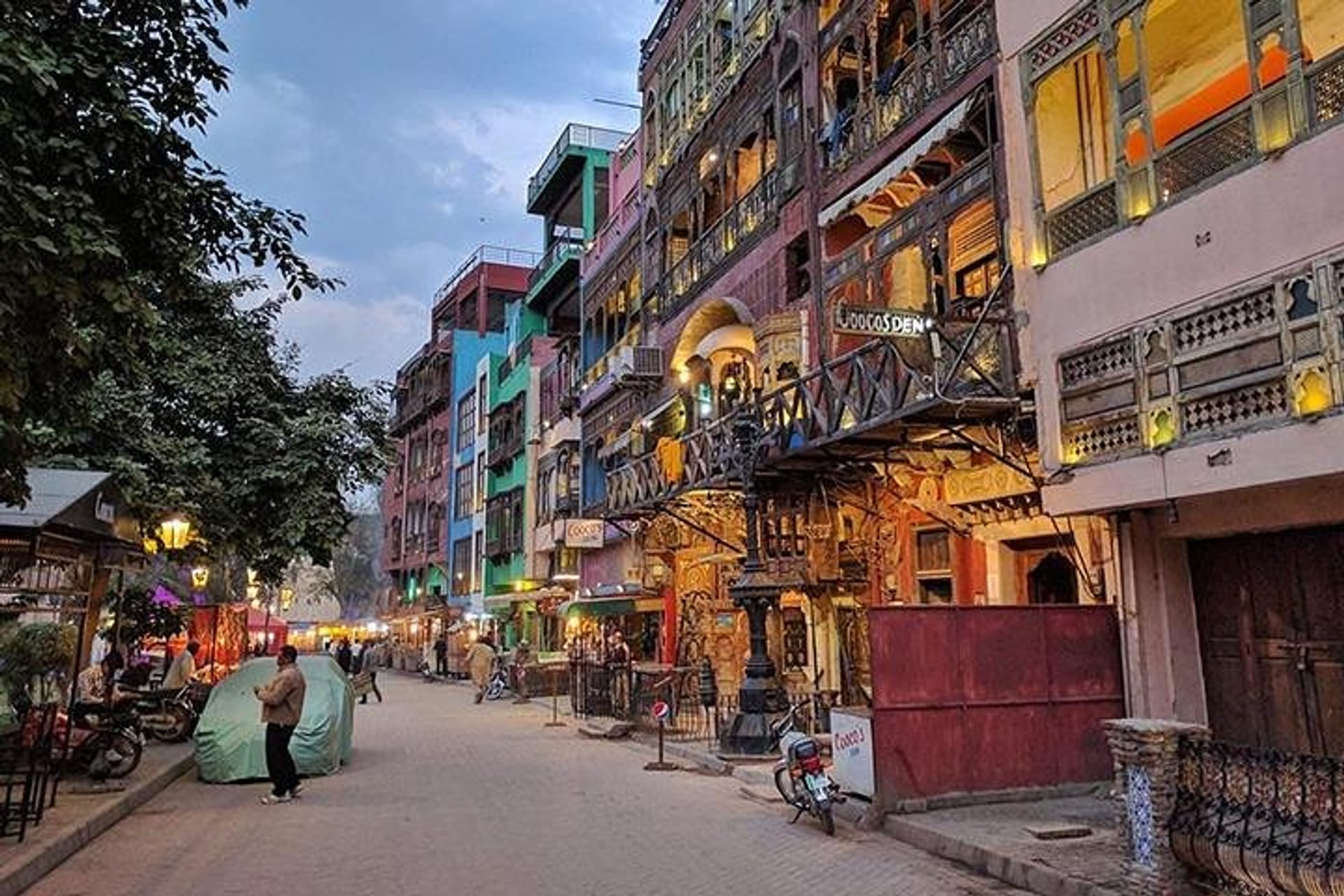
Lahore’s true soul lives inside its Walled City, a densely packed labyrinth of bazaars, havelis (traditional mansions), mosques, and cultural heritage. Walking here is like time travel. From Delhi Gate to Shahi Hammam, every step reveals something raw and real.
When I explored the narrow alleys, I stumbled upon hidden havelis adorned with carved wooden balconies. Street food vendors served hot pathooray, jalebi, and nihari. Don’t miss the Gali Surjan Singh, one of the city’s most Instagrammable corners.
Getting There: Start from Delhi Gate. Best explored on foot or via Walled City’s guided walking tours.
Cost: Free, but guided tours cost PKR 400–1000 depending on the package.
Insider Tip: Visit in the morning for fewer crowds. Download the WCLA (Walled City Lahore Authority) app for self-guided routes.
6. Minar-e-Pakistan
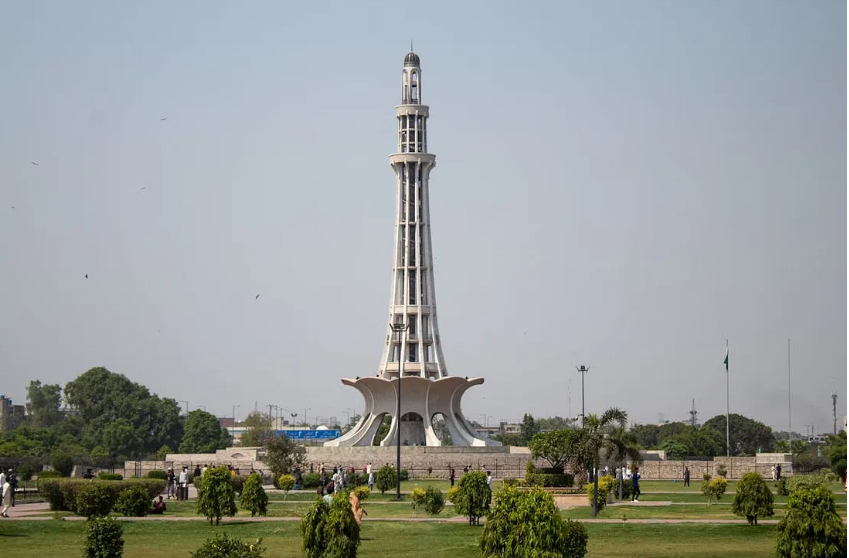
Known as the “Eiffel Tower of Lahore,” Minar-e-Pakistan stands as a symbol of the country’s independence movement. Located in Iqbal Park, this 70-meter-high tower commemorates the historic Lahore Resolution of 1940.
The monument is surrounded by lush green gardens where families picnic, and vendors sell everything from roasted corn to cotton candy. I recommend heading up to the base during sunset—it offers stunning views of the city skyline and Badshahi Mosque in the distance.
Location: Near Circular Road and Ravi River.
Entry Fee: Free
Timing: 6 AM to 9 PM
Tip for Travelers: Be cautious with valuables here. It’s a beautiful place, but keep your belongings secure, especially during festivals and public holidays when the park is crowded.
7. Anarkali Bazaar
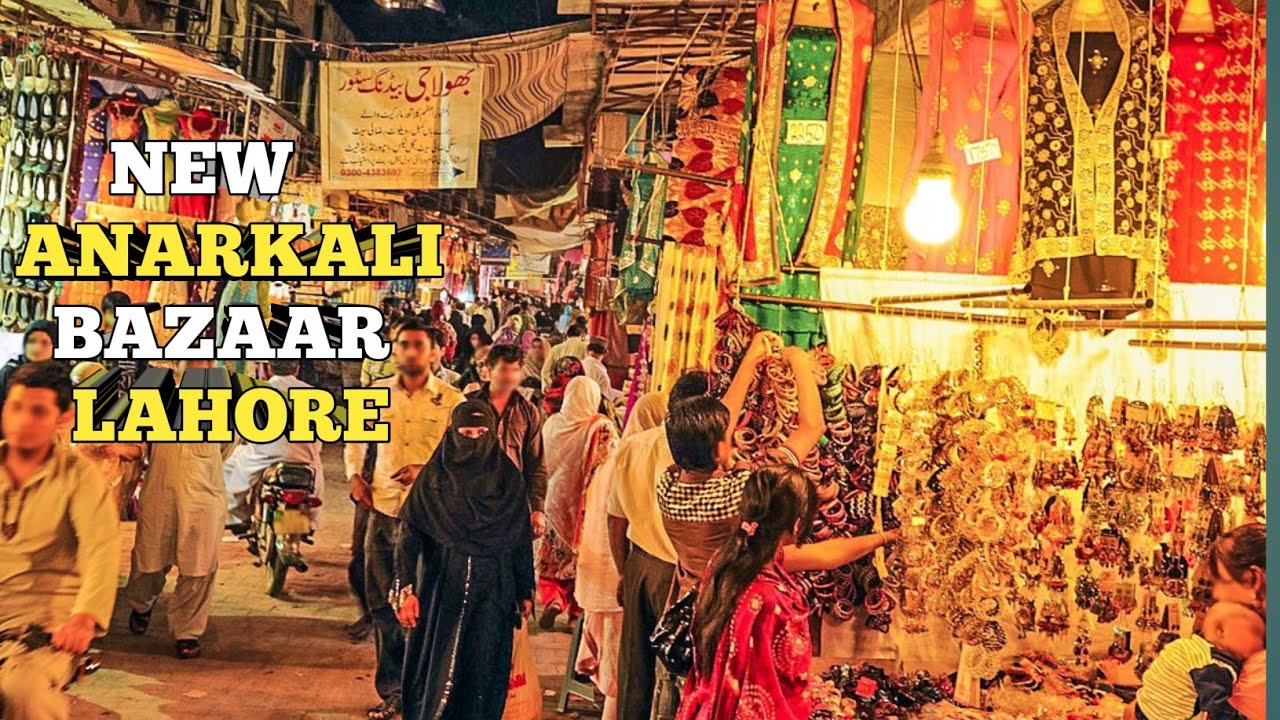
Lahore is incomplete without shopping, and Anarkali Bazaar is a whirlwind of color, fabric, jewelry, and chaos—in the best way possible. Named after the legendary courtesan Anarkali, the bazaar is one of South Asia’s oldest and liveliest markets.
You’ll find everything from bridal lehengas and embroidered shawls to antique decor and traditional khussas (leather footwear). Bargaining is an art form here, and shopkeepers expect it.
Location: Adjacent to Mall Road.
Open Hours: 10 AM – 9 PM, closed on Sundays.
Specialties: Handcrafted jewelry, ethnic wear, dry fruits, home decor.
Local Tip: Avoid peak hours (6–8 PM). Come early and wear comfortable shoes—you’ll be walking a lot. Women travelers may prefer visiting in pairs or during daylight for a more relaxed experience.
8. Data Darbar (Data Ganj Bakhsh Shrine)
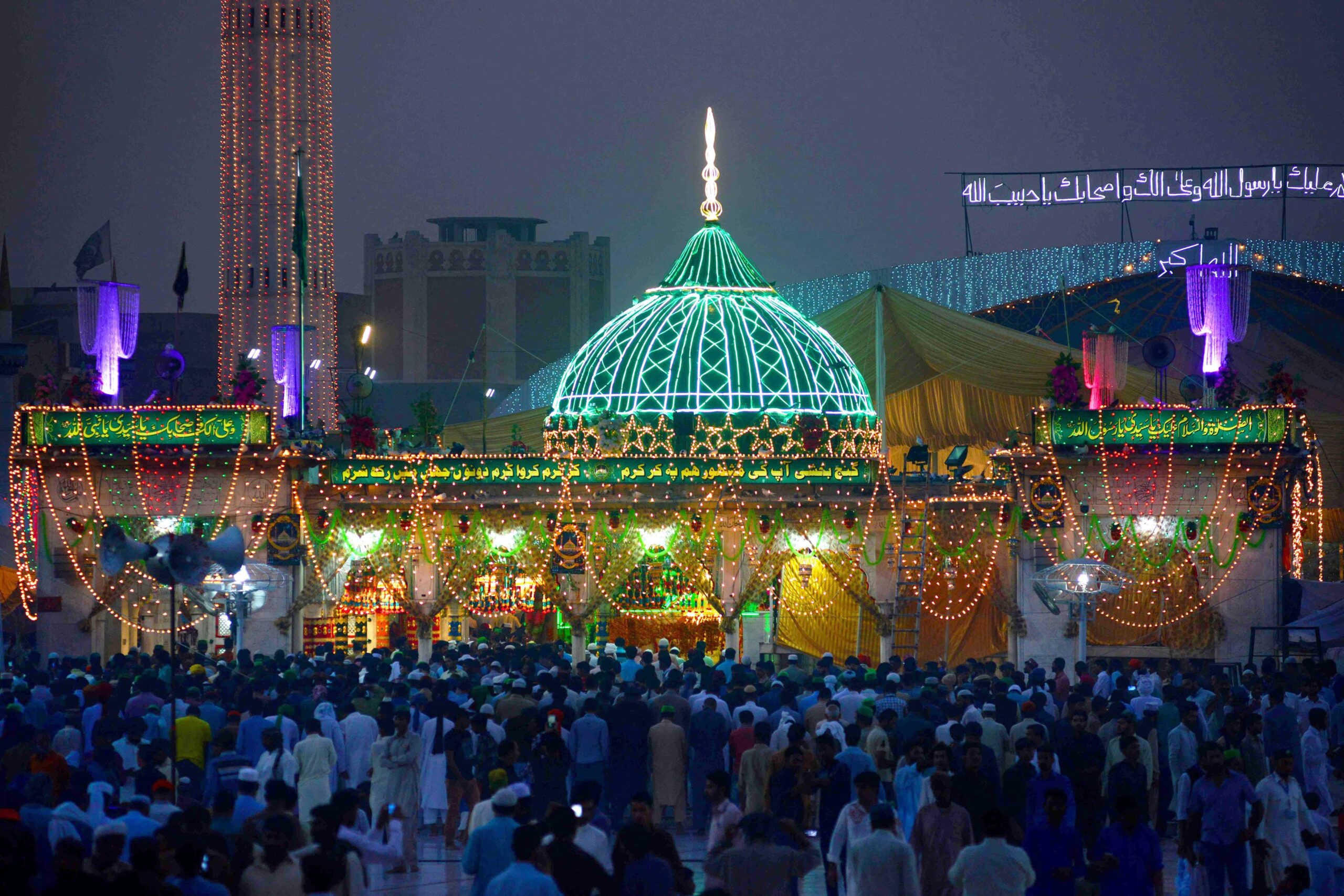
Data Darbar is not just a shrine—it’s a spiritual heartbeat of Lahore. Built to honor Hazrat Ali Hujwiri, a revered 11th-century Sufi saint, this is the largest Sufi shrine in South Asia and a key pilgrimage site.
I visited on a Thursday night, when the entire courtyard was alive with the rhythmic beats of qawwali. The atmosphere was electric yet peaceful—devotees praying, offering rose petals, or just sitting quietly, soaking in the tranquility. Whether you’re spiritual or just culturally curious, this is a must-see for understanding Lahore’s spiritual roots.
Location: Near Bhati Gate, Old Lahore
Entry Fee: Free
Best Time: Thursday nights for qawwali or early mornings for quiet reflection.
Local Advice: Dress modestly and remove your shoes before entering. Avoid peak hours for a peaceful visit.
9. Liberty Market
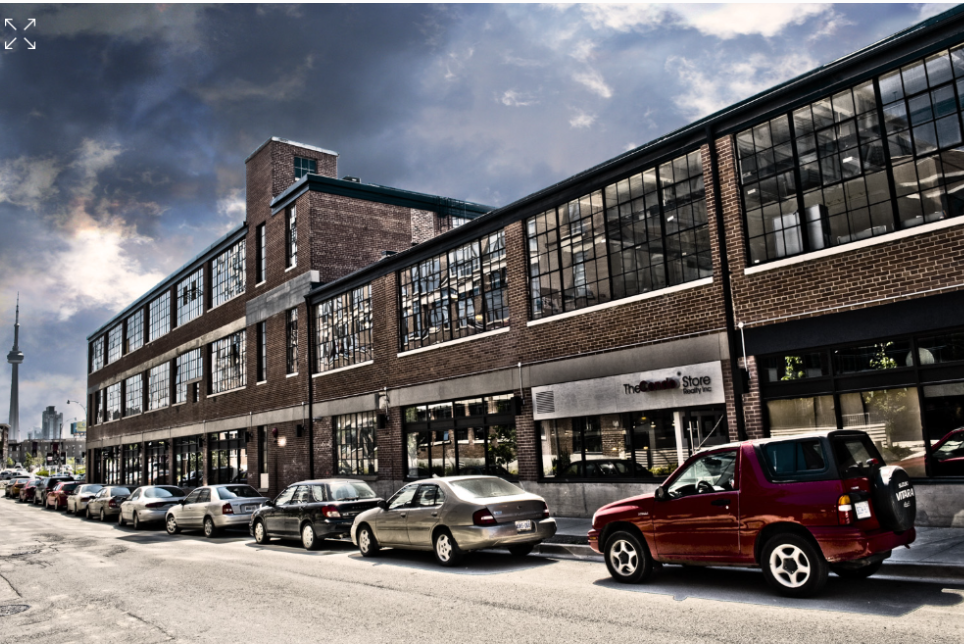
If you’re looking for a modern shopping experience with a local twist, Liberty Market in Gulberg offers the perfect blend of retail, food, and people-watching. From branded boutiques to independent clothing stalls and fabric shops, Liberty has something for everyone.
When I went shopping for a wedding gift, I ended up staying for hours. The selection of ethnic wear—especially the chiffon and silk embroidered collections—was outstanding. And don’t miss the street vendors selling corn in paper cones, spicy chaat, and mango shakes.
Location: Gulberg III, near Main Boulevard
Open Hours: 11 AM – 10 PM
Specialties: Bridal wear, women’s apparel, shoes, jewelry
Insider Tip: Bargaining works better in smaller stalls than branded shops. Bring cash for faster transactions.
10. The Lahore Food Street (Fort Road)
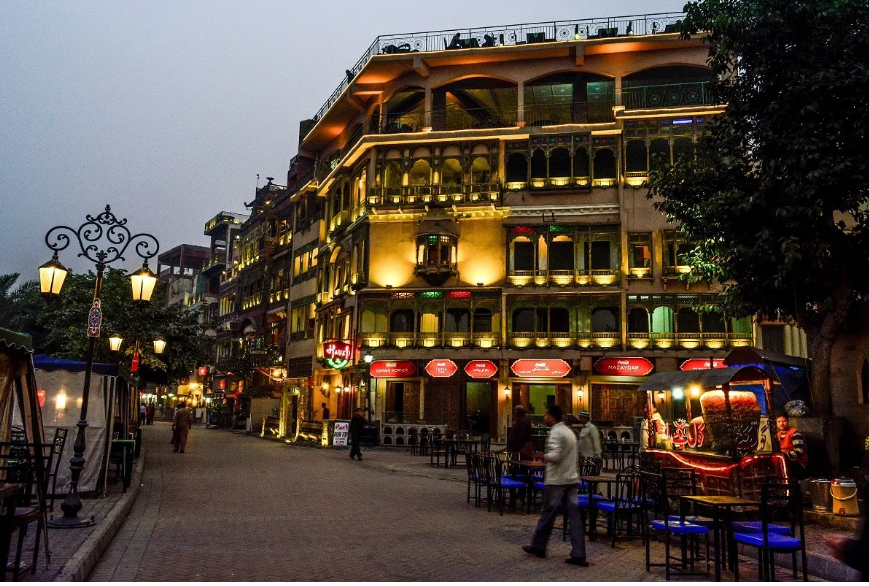
If your tastebuds crave adventure, Fort Road Food Street near Badshahi Mosque is culinary heaven. With rooftop restaurants offering panoramic views of historic landmarks and a variety of traditional dishes, this place is a nighttime hotspot.
I tried Butt Karahi and Sajji while watching the mosque illuminated against the night sky. The sound of sizzles from the kitchen, the aroma of spices, and the backdrop of centuries-old walls made it unforgettable.
Location: Fort Road, adjacent to Lahore Fort
Top Picks: Anda Shami Burger, Seekh Kebabs, Lahori Karahi
Best Time to Visit: After 7 PM for dinner with views
Dining Tip: Reserve rooftop tables in advance on weekends. Dress smart-casual—it’s a photogenic location!
11. Gulshan-e-Iqbal Park

One of Lahore’s largest urban parks, Gulshan-e-Iqbal Park is a sprawling green retreat perfect for families, joggers, or anyone needing a break from the urban bustle. With lakes, walking trails, rides, and picnic spots, it’s popular among locals.
I found the park incredibly refreshing in the early morning. Joggers doing laps, families setting up breakfast picnics, and kids giggling on swings—there’s a calm energy here that’s hard to ignore.
Location: Allama Iqbal Town
Entry Fee: PKR 20
Facilities: Boating, jogging track, rides, food stalls
Local Tip: Avoid weekends if you’re looking for a quiet walk. The park can get very crowded during public holidays and school vacations.
12. The National History Museum
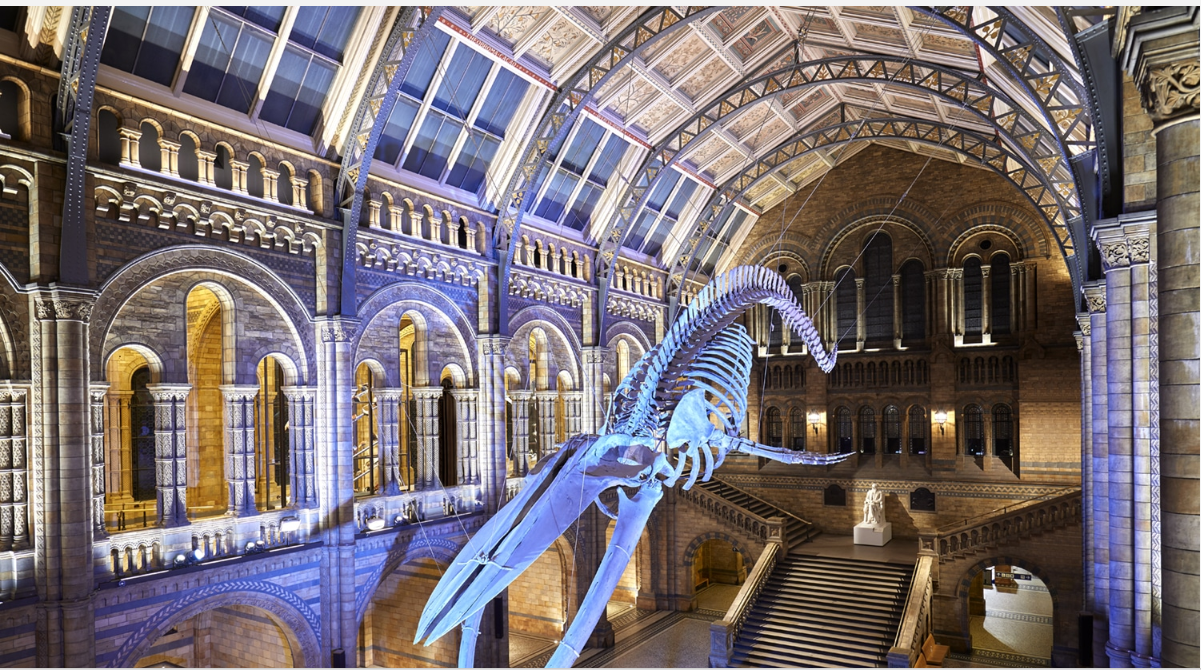
Located inside Greater Iqbal Park, the National History Museum is a modern, interactive tribute to Pakistan’s freedom movement, art, culture, and music. Designed with multimedia exhibits and immersive storytelling, it’s a breath of fresh air from traditional museums.
What stood out to me was the digital Independence Day simulation, where you experience 14th August 1947 like a live event. It was deeply emotional. The music and film galleries are also well-curated and highlight Pakistan’s rich creative legacy.
Location: Near Minar-e-Pakistan
Entry Fee: PKR 50
Hours: 10 AM – 6 PM, closed on Mondays
Insider Tip: Visit in the late afternoon, then stroll around the adjacent park at sunset. Combine with a Minar-e-Pakistan visit for a full historical circuit.
13. The Mall Road
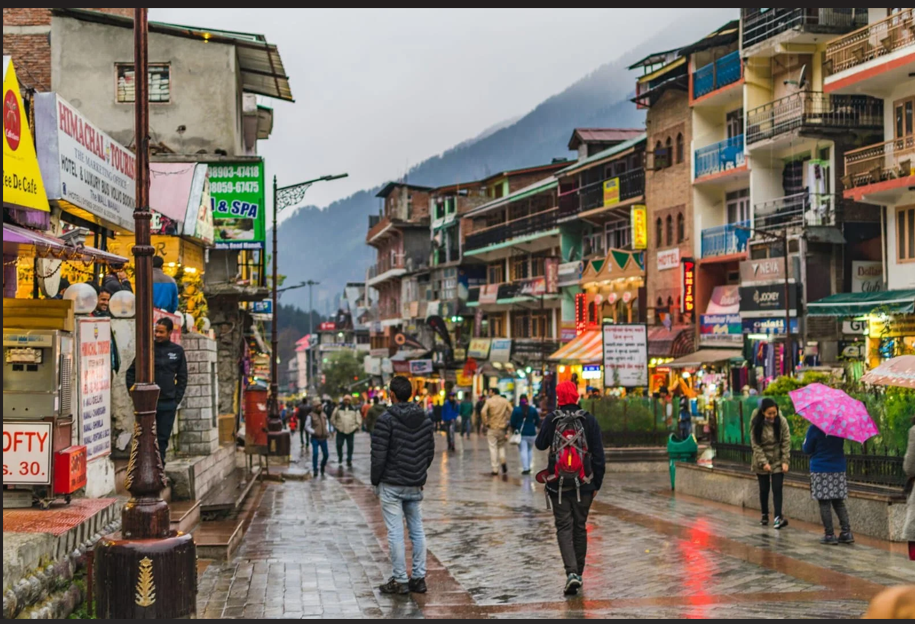
The Mall Road, or Shahrah-e-Quaid-e-Azam, is Lahore’s historic and cultural artery. This colonial-era boulevard runs through the heart of the city, lined with majestic buildings from the British Raj era—many of which are now government institutions or museums.
I spent a late afternoon walking from Zamzama Gun (Kim’s Gun) toward Governor House, soaking in the elegance of red-bricked facades, wrought-iron balconies, and banyan-shaded footpaths. The street is also home to several landmarks including the Punjab Assembly, Alhamra Arts Council, and Aitchison College.
Location: Runs from Masti Gate to Gulberg via Lower Mall and Upper Mall
Must-See Spots: Lahore Museum, Tollinton Market, GPO Building
Open Hours: Always open; best viewed during daylight for architecture
Tip: Avoid rush hour traffic. Rent a bicycle or take a slow rickshaw ride to appreciate the architecture and vibe.
14. Bagh-e-Jinnah (Lawrence Gardens)
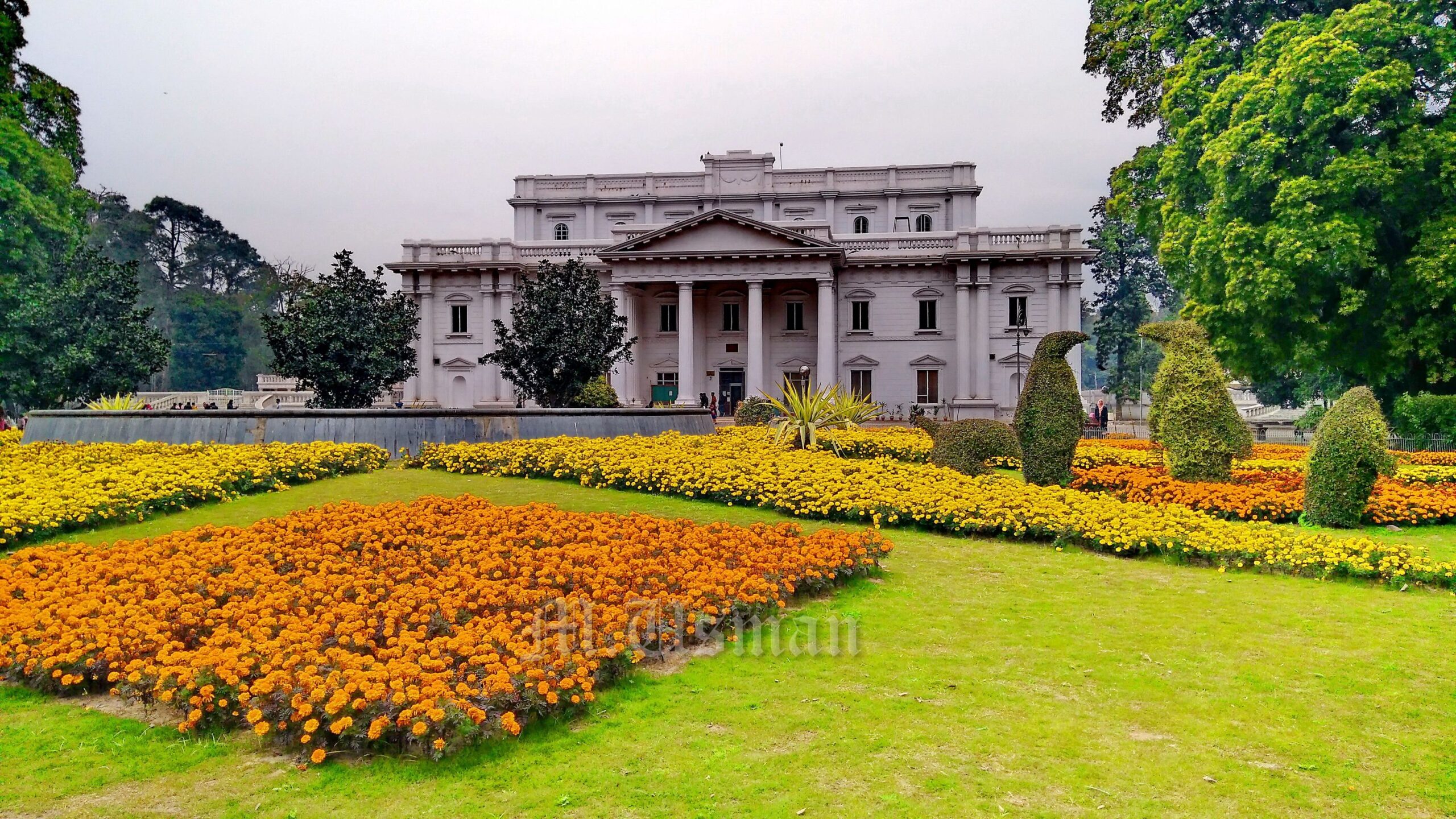
Formerly known as Lawrence Gardens, Bagh-e-Jinnah is a lush colonial park filled with botanical beauty, marble fountains, cricket grounds, and even a Victorian-style library. Spread across 141 acres, it’s a peaceful retreat in the middle of the city.
I love coming here early in the morning—birds chirping, cool breeze, and elderly groups doing yoga or reading newspapers in the sun. Don’t miss the Quaid-e-Azam Library, a beautiful Greco-Roman building tucked among old trees.
Location: Mall Road near Lahore Zoo
Entry Fee: Free
Highlights: Quaid Library, jogging tracks, rose gardens
Local Tip: Visit the park during spring flower season (March–April) for the annual flower show.
15. Lahore Zoo

Founded in 1872, Lahore Zoo is one of the oldest zoos in South Asia and remains a family favorite. Home to over 1,000 animals including Bengal tigers, lions, giraffes, and exotic birds, it’s both entertaining and educational.
I visited with my nephew, and it was a delight watching kids engage with the animal exhibits. While it could benefit from better enclosures, the zoo does make an effort in conservation and education.
Location: Mall Road, near Bagh-e-Jinnah
Entry Fee: PKR 40 (adults), PKR 20 (children)
Open Hours: 9 AM – Sunset, closed on Mondays
Family Tip: Bring snacks and water, and wear sunblock. It’s a big space with lots of walking.
16. Packages Mall
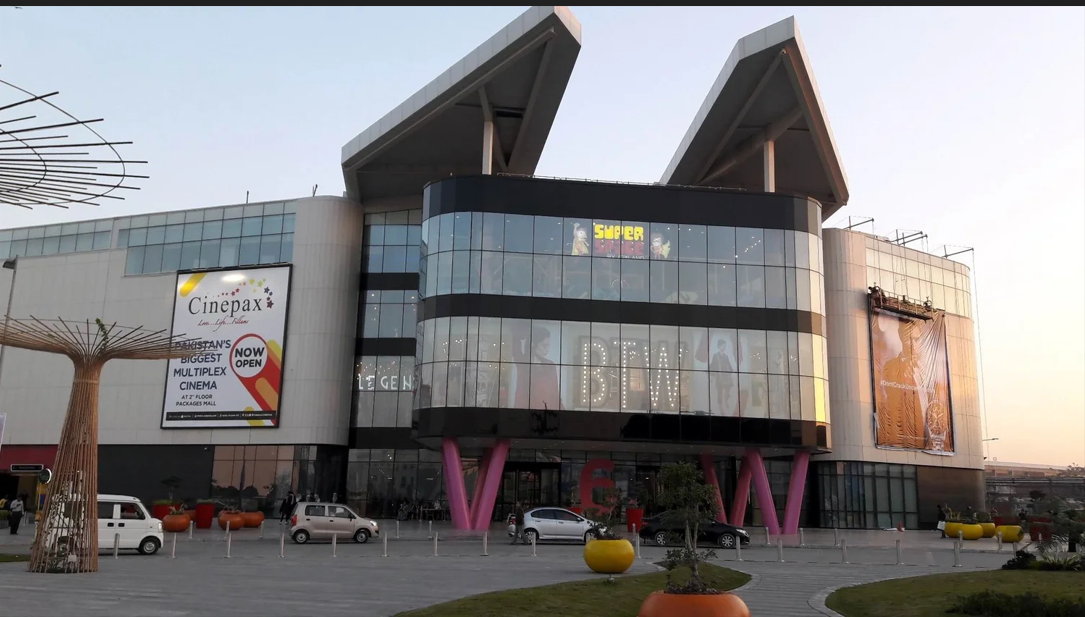
For a modern, upscale experience, Packages Mall is a one-stop destination for international brands, fine dining, cinemas, and entertainment zones. With more than 200 outlets, it’s Lahore’s premier shopping mall.
I stopped by for a coffee but ended up spending hours browsing clothing stores and watching a film in their luxurious cinema. It’s ideal for those looking to cool off in air-conditioned comfort while enjoying urban leisure.
Location: Walton Road, near DHA Phase 3
Open Hours: 11 AM – 11 PM
Facilities: Shopping, cinema, food court, kids’ play area
Travel Tip: If you’re traveling with children or want a break from the heat, this is a convenient, comfortable retreat.
17. Haveli Barood Khana
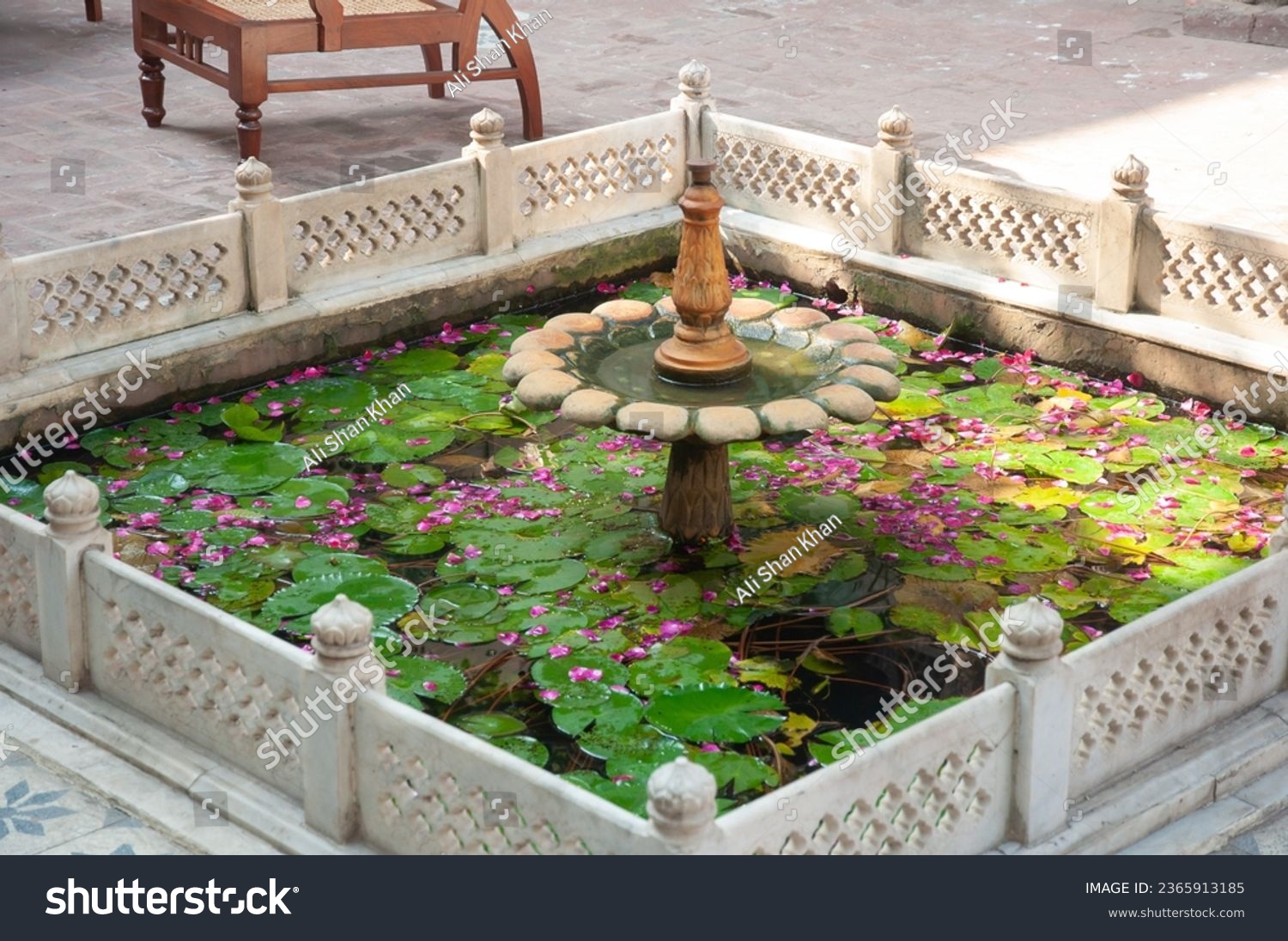
Step into Lahore’s bygone era with a visit to Haveli Barood Khana, a beautifully restored 18th-century mansion located within the Walled City. Once used to store gunpowder, this haveli now serves as a cultural hub hosting classical music nights, art exhibitions, and even private dining events.
The blend of Mughal, Sikh, and colonial architecture is remarkable, and I had the chance to attend a sitar recital in the candle-lit courtyard—an experience that stayed with me long after.
Location: Inside Mochi Gate, Old City
Access: By appointment or during public cultural events
Activities: Live music, private dinners, photography, heritage tours
Insider Tip: Follow their official page or Walled City Lahore Authority’s event calendar for open events or guided visits.
18. Chauburji
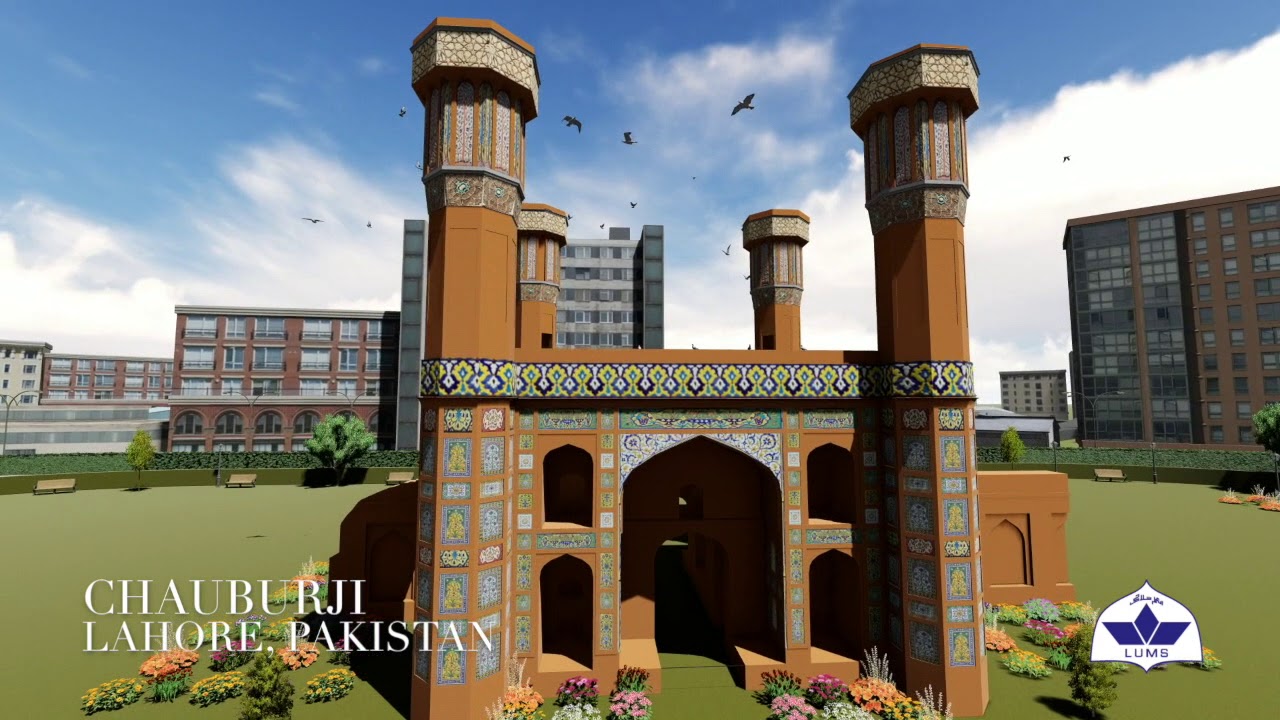
Chauburji, meaning “Four Towers,” is one of Lahore’s most iconic Mughal-era monuments. Built in 1646 during the reign of Emperor Shah Jahan, it was originally the gateway to a now-lost garden. The structure’s distinctive four minarets and intricate tilework have made it a symbol of Lahore’s rich architectural heritage.
Standing there, surrounded by modern traffic, I couldn’t help but marvel at how this centuries-old structure still dominates the landscape. The contrast between the old and new Lahore is striking here—and absolutely worth photographing.
Location: Multan Road, near the Chauburji Metro Station
Entry Fee: Free
Best Time to Visit: Early morning or late afternoon for the best light
Local Tip: Combine your visit with a walk through nearby old neighborhoods to explore the hidden architectural gems of Mughal Lahore.
19. MM Alam Road
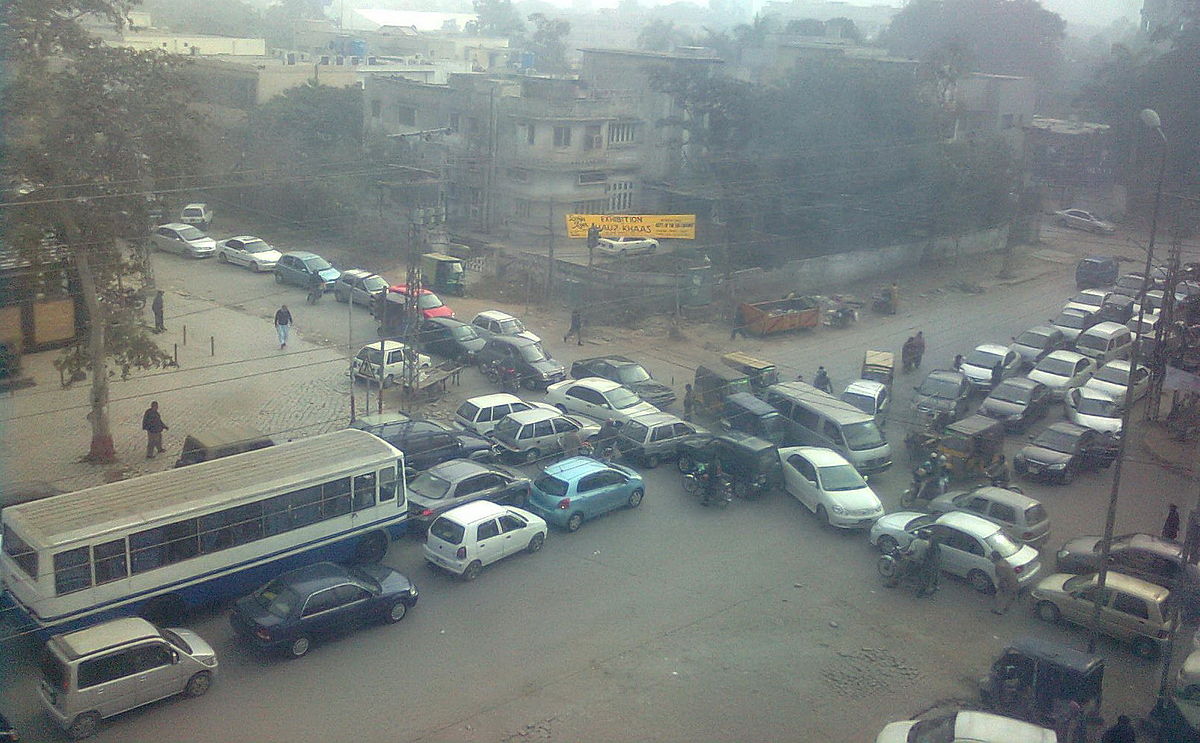
Named after the celebrated Pakistani Air Force hero M. M. Alam, this upscale boulevard in Gulberg is Lahore’s go-to destination for fine dining, chic cafés, designer boutiques, and nightlife. Whether you’re craving sushi, steak, or Pakistani fusion, MM Alam has it all.
I’ve spent many evenings here catching up with friends over coffee at Gloria Jean’s or dinner at Café Aylanto. The street comes alive at night—neon signs, terrace seating, music filtering out from restaurants, and the hum of fashionable crowds.
Location: Gulberg III, just off Main Boulevard
Best Time: Evenings, especially Thursday to Saturday
Top Picks: Café Zouk, Nando’s, Jade Café, Rina’s Kitchenette
Tip for Travelers: Make dinner reservations on weekends—it’s popular and often packed. Paid valet parking is widely available.
20. Emporium Mall
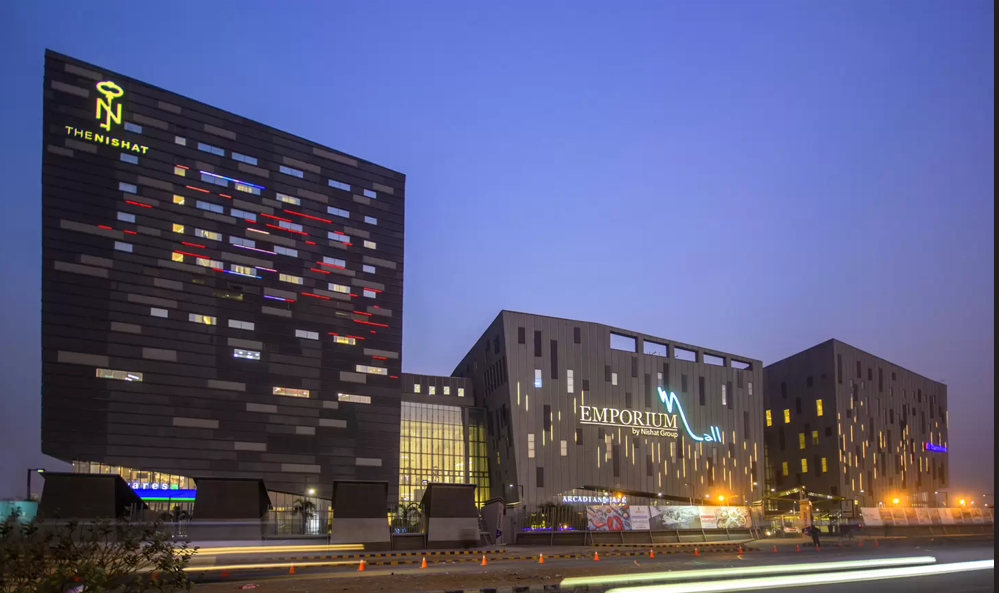
Located in Johar Town, Emporium Mall is a massive multi-purpose complex owned by the Nishat Group. With over 200 national and international brands, a multiplex cinema, an indoor theme park, and a five-star hotel, it’s a world unto itself.
I spent a day exploring the different levels and was amazed at the variety—from luxury fashion to food courts offering both desi and international cuisine. It’s a perfect spot for families, couples, or solo travelers looking to enjoy modern Lahore indoors.
Location: Near Expo Center, Johar Town
Open Hours: 11 AM – 11 PM
Facilities: Cinema, food court, Hyperstar grocery, kids’ play zones
Family Tip: Head to Fun Factory Park inside the mall for safe, clean kids’ entertainment while you shop or relax.
Safety in Lahore: A Traveler’s Guide
Visiting Lahore is, for the most part, a safe and rewarding experience. Like any large city, it comes with a few practical considerations, especially for international visitors unfamiliar with local customs. From navigating busy streets to understanding cultural nuances, here’s what you need to know to stay safe and confident while exploring the cultural capital of Pakistan.
1. General Safety and Crime
Lahore is considered one of the safer metropolitan cities in Pakistan, particularly in comparison to other major South Asian urban centers. Violent crime involving tourists is rare, and petty crime like pickpocketing is uncommon but can occur in crowded places like Anarkali Bazaar, Liberty Market, or festival areas.
Basic precautions include:
-
Keep your phone and wallet secure, especially in dense markets.
-
Avoid displaying large amounts of cash or expensive jewelry.
-
Be discreet with cameras or high-end equipment in less-touristy areas.
Police & Security Presence:
Lahore has a visible police presence and an efficient emergency response system. Tourist police are present in key areas like the Walled City, Badshahi Mosque, and Liberty Market.
Emergency Numbers:
-
Police: 15
-
Ambulance: 1122
-
Fire Brigade: 16
-
Tourist Police Helpline: +92-42-99202166
2. Health and Hygiene
While Lahore has improved its healthcare infrastructure over the years, travelers should still take some health precautions:
-
Drink only bottled or filtered water. Avoid tap water.
-
Eat freshly cooked food and skip uncooked street snacks if unsure of hygiene.
-
Carry basic medications (diarrhea, headache, rehydration salts) and hand sanitizer.
-
Use mosquito repellent, especially during monsoon season (July–September).
Vaccinations Recommended:
-
Hepatitis A & B
-
Typhoid
-
Tetanus
-
COVID-19 (fully vaccinated with booster, if possible)
If you require medical attention, Shaukat Khanum, Doctors Hospital, and Hameed Latif Hospital are top private facilities that offer emergency services and English-speaking staff.
3. Cultural and Social Etiquette
Respect for local customs is crucial for a safe and positive experience. Lahore is conservative by Western standards, especially in older parts of the city.
✅ Do:
-
Dress modestly, especially when visiting mosques or traditional areas.
-
Ask permission before photographing people, especially women.
-
Use the right hand for greetings and giving/receiving items.
-
Greet with “Assalamu Alaikum” (peace be upon you) — it’s always appreciated.
❌ Don’t:
-
Public displays of affection (hugging, kissing) are frowned upon.
-
Criticizing religion or politics in public conversations.
-
Entering mosques during prayer without guidance.
4. Transportation Safety
Navigating Lahore is relatively straightforward, with a growing number of safe transport options:
Options include:
-
Careem, Uber, & InDrive: Affordable, app-based ride-hailing services
-
Rickshaws: Great for short distances (negotiate fare before ride)
-
Metrobus & Orange Line Train: Government-run and cost-effective mass transit
Tips:
-
Avoid late-night travel in unfamiliar or remote areas alone.
-
Don’t share rides with strangers unless using reputable apps.
-
Women travelers can request female drivers through ride-hailing apps.
5. Women and Solo Travelers
Many women visit Lahore solo or in small groups and have memorable experiences. With awareness and cultural sensitivity, female travelers can navigate Lahore safely and confidently.
Tips for Women:
-
Dress conservatively (long sleeves, loose pants, scarf in religious areas).
-
Stick to public places and avoid walking alone late at night.
-
Consider joining group tours or hiring local guides when exploring inner city areas.
-
Some restaurants, malls, and metro coaches have “family” or “ladies-only” sections—take advantage of these for more comfort.
Where to Stay in Lahore: Accommodation Guide for Every Traveler
Finding the right place to stay in Lahore depends on your travel goals—whether you’re here to explore history, indulge in culinary delights, or shop ‘til you drop. Lahore offers a wide range of accommodations, from luxury hotels with rooftop pools to cozy guesthouses in cultural quarters.
Below is a breakdown of where to stay, based on neighborhood vibes, price ranges, and travel styles.
Best Neighborhoods to Stay in Lahore
1. Gulberg – Modern & Central
If you want to be close to the city’s best restaurants, malls, and nightlife, Gulberg is the ideal choice. It’s modern, clean, and centrally located.
-
Great For: First-time visitors, families, business travelers
-
Nearby Attractions: Liberty Market, MM Alam Road, Gaddafi Stadium
-
Top Hotels:
-
Avari Xpress ($$)
-
The Nishat Hotel ($$$)
-
Indigo Heights ($$–$$$)
-
2. Old City (Walled City) – Historical Charm
To immerse yourself in Lahore’s soul, the Walled City offers authentic experiences with mosques, havelis, and bustling bazaars right outside your door.
-
Great For: Cultural explorers, photographers, history lovers
-
Nearby Attractions: Badshahi Mosque, Lahore Fort, Shahi Hammam
-
Top Stays:
-
Haveli Barood Khana ($$ – boutique heritage stay)
-
E-Lodge Guesthouse (budget-friendly)
-
Budget lodges near Delhi Gate (for the adventurous)
-
Tip: Accommodations here are less conventional—expect local guesthouses or curated stays.
3. DHA (Defence Housing Authority) – Upscale & Quiet
For a quieter and more upscale experience, DHA is known for its wide roads, safety, and luxury homes. It’s popular with expats and long-term visitors.
-
Great For: Long stays, digital nomads, solo female travelers
-
Nearby Attractions: Packages Mall, Lahore Ring Road access
-
Top Hotels:
-
Luxus Grand Hotel DHA ($$$)
-
Maisonette Hotel & Resort ($$)
-
Serai Boutique Hotel ($$)
-
4. Johar Town – Family-Friendly & Commercial
Located near Emporium Mall and Expo Center, this is an ideal area for travelers seeking access to major brands, hospitals, and budget-friendly dining options.
-
Great For: Families, domestic tourists, shopping enthusiasts
-
Nearby Attractions: Emporium Mall, Shaukat Khanum Hospital
-
Top Hotels:
-
Royal Swiss Lahore ($$$)
-
Shelton Hotel ($$)
-
Boutique Johar Town Suites ($)
-
Accommodation by Budget
| Category | Price (Per Night) | Examples |
|---|---|---|
| Budget | PKR 2,000–6,000 ($7–20) | Backpackers Inn, Lahore Guest House, E-Lodge |
| Mid-Range | PKR 6,000–15,000 ($20–50) | Avari Xpress, Maisonette, Park Lane Hotel |
| Luxury | PKR 15,000+ ($50+) | Pearl Continental, Nishat Hotel, Royal Swiss |
Booking Tips
-
Best Booking Platforms: Booking.com, Agoda, Sastaticket.pk, Airbnb (limited but growing)
-
Seasonal Rates: Prices surge during wedding season (Nov–March) and public holidays—book early!
-
Check Reviews: Always verify ratings on Google or TripAdvisor for current service quality.
-
Airport Proximity: For short layovers, consider hotels in Cantt or Askari 10, which are close to Allama Iqbal International Airport.
Local Insider Tips
-
Wi-Fi Quality: Most hotels offer Wi-Fi, but signal strength varies. Confirm if you’re working remotely.
-
Breakfast Matters: “Free breakfast included” often means a basic desi-style meal—eggs, paratha, chai.
-
Transport Access: Hotels near Mall Road or Gulberg make it easier to access tourist spots without long commutes.
Lahore Travel Cost Guide: Budget Breakdown & Money-Saving Tips
Traveling to Lahore can be incredibly affordable or indulgently luxurious—it all depends on your preferences. Whether you’re a backpacker, a mid-range traveler, or someone looking for high-end experiences, Lahore offers great value for your money.
This section will give you a detailed idea of what to expect in terms of daily expenses, currency exchange, hidden costs, and budget hacks to help you get the most out of your journey.
1. Daily Expense Estimates
| Budget Category | Daily Cost (PKR) | In USD (approx.) | What’s Included |
|---|---|---|---|
| Budget | PKR 3,000–5,000 | $10–17 | Local guesthouse, public transport, street food, free attractions |
| Mid-Range | PKR 6,000–15,000 | $20–50 | 3-star hotel, Uber/rickshaw, dine-in restaurants, entrance tickets |
| Luxury | PKR 16,000–35,000+ | $55–120+ | 4–5 star hotels, fine dining, private tours, premium services |
2. Typical Prices of Common Travel Items
-
Basic Street Meal (Paratha + Chai): PKR 150–250 ($0.50–0.80)
-
Mid-range Restaurant Meal: PKR 800–1,500 ($2.50–5)
-
Luxury Dinner for Two: PKR 4,000+ ($13+)
-
Local Transport (Rickshaw): PKR 150–300 per ride ($0.50–1)
-
Uber within city: PKR 200–500 depending on distance
-
Museum Entry Fees: PKR 20–100 (locals), PKR 500–1,000 (foreigners)
-
SIM Card/Data Package: PKR 500–1,000 ($1.50–3.30)
-
Hotel per Night: PKR 2,500 (budget) to PKR 25,000+ (luxury)
3. Currency Exchange & Payment Tips
-
Currency: Pakistani Rupee (PKR)
-
Exchange Rate (approx.): 1 USD ≈ PKR 280–300
-
ATMs: Widely available in major areas (bring an international card)
-
Credit/Debit Cards: Accepted in malls, hotels, and large restaurants. Cash is essential for bazaars, street vendors, and local eateries.
Exchange Tips:
-
Use authorized exchange centers like Wall Street Exchange or Forex Pakistan in Liberty Market or MM Alam.
-
Avoid airport kiosks—they offer poor rates.
-
Some high-end hotels may exchange money but with higher margins.
4. Hidden Costs to Watch Out For
-
Tipping: Not mandatory, but appreciated. 5–10% in restaurants, PKR 50–100 for bellboys or drivers.
-
Taxes & Service Charges: High-end hotels and restaurants often add 16–19% tax and 5–10% service charge.
-
Public Holidays: Transport and food prices may rise during Eid, Independence Day, and local festivals.
-
SIM card activation fees may apply if buying through a mobile carrier office.
5. Cost-Saving Strategies
💡 Eat Local: Street food like gol gappay, bun kebabs, and chana chaat is delicious and cheap. Try Food Street or local dhabas for the best value.
💡 Use Public Transport: The Orange Line Metro Train and Metrobus are clean, safe, and cost-effective (as low as PKR 20 per ride).
💡 Stay in Guesthouses: Lahore has dozens of charming guesthouses offering great service for a fraction of hotel prices.
💡 Bundle Attractions: Some tour companies offer combo tickets or day-tour packages for places like the Walled City, Lahore Fort, and Badshahi Mosque.
💡 Visit Free Sights: Gardens, shrines, public parks, and certain museums have free entry or minimal costs.
How to Reach Lahore: All Travel Routes Explained
Lahore, the vibrant capital of Punjab, is well-connected by air, road, and rail, making it accessible for both domestic and international travelers. Whether you’re flying in, taking a scenic train ride, or crossing from neighboring cities or countries, this guide offers all the essential routes and travel options.
By Air: Flying to Lahore
Allama Iqbal International Airport (LHE) is Lahore’s main airport and serves as a hub for both domestic and international flights. Located around 15 km from the city center, the airport offers excellent connectivity.
International Flights
Airlines offering direct or connecting flights:
-
Emirates, Qatar Airways, Turkish Airlines, Etihad, FlyDubai
-
Saudia, Oman Air, Gulf Air
Popular Origins:
-
Middle East: Dubai, Doha, Riyadh, Jeddah, Muscat
-
Europe: London, Istanbul, Paris
-
Asia: Kuala Lumpur, Bangkok, Beijing
Domestic Flights
Major domestic routes:
-
Karachi to Lahore – ~1.5 hours
-
Islamabad to Lahore – ~1 hour
-
Skardu, Quetta, Peshawar, and Gilgit – Regular direct/connecting flights
Book flights via:
By Train: Rail Routes to Lahore
Lahore Railway Station is a historic hub centrally located near the Walled City. Operated by Pakistan Railways, it connects to nearly every major city.
Top Train Routes
-
Karachi to Lahore: Green Line, Karakoram Express (~18–20 hrs)
-
Islamabad to Lahore: Subak Raftar, Islamabad Express (~5 hrs)
-
Multan to Lahore: Multan Express (~4 hrs)
-
Faisalabad/Sialkot: ~2–3 hrs via short-haul trains
Online Booking:
Book tickets on the Pakistan Railways official site or via the PakRail app.
By Bus: Road Routes to Lahore
Comfortable, air-conditioned buses run frequently between Lahore and nearly all Pakistani cities.
Major Operators
Common Routes
-
Islamabad to Lahore (M2 Motorway): ~4.5 hrs
-
Karachi to Lahore (N-5): ~18–20 hrs
-
Multan to Lahore (M4): ~4 hrs
-
Faisalabad, Gujranwala, Bahawalpur, Peshawar: direct buses available
Lahore Bus Terminals:
-
Thokar Niaz Baig
-
Kalma Chowk
-
Shahdara Terminal
By Car: Driving to Lahore
Lahore is well-connected via motorways and highways:
-
From Islamabad: M2 Motorway (~4.5 hrs)
-
From Multan: M4 to M3 (~4 hrs)
-
From Faisalabad: M3 (~2.5 hrs)
-
From Gujranwala: GT Road (~1.5 hrs)
Use Google Maps or navigation apps for real-time directions.
Tips for Drivers:
-
Fuel up before entering city congestion
-
A toll tax is charged at motorway exits
-
Avoid peak traffic (8–10 AM, 5–8 PM)
From India via Wagah Border Crossing
For travelers from India, Lahore can be reached overland via the Wagah Border, 24 km from the city.
-
Connects Amritsar (India) to Lahore (Pakistan)
-
Pedestrian crossing only; no vehicle entry
-
Entry requires a valid visa (no visa-on-arrival)
-
See the Wagah Flag Ceremony at sunset for a patriotic spectacle
Travel Tip: Pre-arrange transport on both sides. Rickshaws and taxis are available from Lahore side.
Navigation Tools
FAQs About Traveling to Lahore, Pakistan
1. Is Lahore safe for tourists?
Yes, Lahore is generally safe for tourists. However, like any major city, it’s important to remain cautious in crowded places, avoid political gatherings, and follow local laws. Stick to tourist-friendly areas like Gulberg, DHA, and the Walled City, and always inform your accommodation of your travel plans.
2. What is the best time to visit Lahore?
The ideal time to visit Lahore is from October to March, when the weather is pleasant, especially for exploring historical sites and attending festivals like Basant or the Lahore Literature Festival. Avoid May–July due to extreme heat.
3. Do I need a visa to visit Lahore?
Yes, foreign travelers require a visa to enter Pakistan. You can apply for a tourist visa through the official Pakistan Online Visa System. Visa-on-arrival is available for select countries.
4. How can I get around in Lahore?
Transportation options include:
-
Metro Bus: Modern BRT system with dedicated lanes
-
Taxis & rickshaws: Widely available
-
Orange Line Train: Pakistan’s first metro train line
5. What language is spoken in Lahore?
The primary language is Punjabi, but Urdu is widely spoken and understood. English is commonly used in hotels, restaurants, and among the educated population.
6. What currency is used in Lahore?
The currency is the Pakistani Rupee (PKR). ATMs are available across the city, and most hotels and restaurants accept debit/credit cards. Carry some cash for bazaars and small eateries.
7. What are the must-visit attractions in Lahore?
Top places include:
-
Badshahi Mosque
-
Lahore Fort
-
Shalimar Gardens
-
Wagah Border
-
Anarkali Bazaar
-
Lahore Museum
-
Minar-e-Pakistan
Explore full details in our Top 20 Destinations in Lahore section.
8. What kind of food is Lahore known for?
Lahore is famous for its spicy and flavorful cuisine. Try:
-
Haleem, Nihari, Paye, and Biryani
-
Street food at Gawalmandi, Fort Road, and Lakshmi Chowk
-
Fine dining in Gulberg and DHA
9. Are there any cultural norms or dress codes?
Yes. While there’s flexibility for tourists, it’s respectful to dress modestly, especially when visiting mosques or religious sites. Avoid revealing clothes and carry a scarf/shawl for women.
10. Can I drink tap water in Lahore?
It’s not recommended. Always drink bottled or filtered water to avoid stomach issues. Reputed hotels and restaurants provide safe drinking water.
11. What mobile networks and internet services are available?
Major telecom providers:
-
Jazz, Zong, Telenor, and Ufone
You can buy a tourist SIM at the airport or any franchise with your passport. 4G coverage is excellent in Lahore.
12. What souvenirs should I buy from Lahore?
Popular souvenirs:
-
Handcrafted shawls, Ajrak, and khussa shoes
-
Truck art gifts and ceramic pottery
-
Local sweets like sohan halwa, dry fruits, and fruit chaat masala
13. Are there any travel restrictions or local laws to follow?
Yes:
-
Avoid taking photos at military buildings or sensitive areas.
-
Alcohol is restricted to non-Muslim foreigners with permits.
-
Carry valid ID (passport or CNIC) at all times.
14. How can I stay connected with locals or guides?
Most hotels and tour operators speak English. For guided experiences, try:
15. How many days are enough for Lahore?
A 3–5 day trip is perfect to explore major attractions, experience the food, and dive into the local culture. Add a day for shopping and one for exploring outskirts like Hiran Minar or Sheikhupura.








